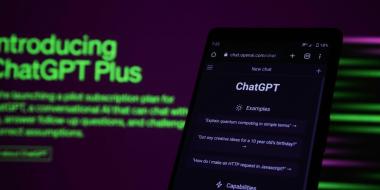Emailing your CV: Subject, Writing and Tips
Email is one of the most practical ways of applying for jobs. It’s quick, easy and your application goes directly to the recruiter or hiring manager. However, while they’re relatively straightforward, it’s essential to make sure your email applications are professional and make a positive impression on employers. In this article, we discuss how to write a strong job application email, including tips on setting up a professional email address.

Why sending a good email with your CV is important
If you’re sending your CV and cover letter as an attachment to an email, the content of the email will be the first thing the recruiter or hiring manager reads. As such, it’s a good idea to give careful thought to the content of your email, and make sure it’s concise, professional and courteous.
You may decide to use your email as your cover letter, rather than attaching a separate cover letter. This only increases the importance of your application email, and it can play a significant role in your chances of success.
How to email your CV
Follow these steps to ensure your email appears professional and makes a positive impression with employers:
Subject line of your email
Firstly, include a subject line in your email to ensure it ends up in the right place (with the hiring manager), and the recipient doesn’t miss it. This means that if your email goes to a general enquiries email inbox, the recipient can send it on to the relevant manager. Include your name, the role you’re applying for and any reference numbers or other relevant information, such as the name of the hiring manager. Take a look at the example subject lines below:
- Office manager application — Susan Henderson
- Office manager application — Susan Henderson (ref. J678-23)
- FAO Mark Harrison: Office manager job application — Susan Henderson
Addressing the hiring manager
Email communication is generally less formal than traditional letters, so your greeting can reflect this. When writing your email, consider the role you’re applying for, and the industry sector. For more traditional sectors, you might prefer a more formal greeting. If you know the name of the hiring manager, address your email to them directly (for example, ‘Dear Emily Harden’ or ‘Hi Emily’). If you don’t know the name of the hiring manager, you can use ‘Dear hiring manager’ or ‘Hi’.
Body of the email
If you’re using your email as a simple vehicle for delivering your CV and cover letter as attachments, the body of your message can be short and to-the-point. If you’re using your email as your cover letter, review our cover letter articles for tips on how to make the best impact.
The best job application emails tend to be short, courteous and professional. They confirm the role you’re applying for and direct the reader’s attention to your attached CV and cover letter.
Ending the email
There are several ways to sign off your application email, but like the greeting, you probably don’t need to use as formal a sign-off as you would with a traditional letter-based application. You can use ‘regards’, ‘kind regards’, ‘best wishes’ or simply ‘thanks’. For more formal applications, you can use ‘sincerely’, but you don’t need to be as formal as ‘yours sincerely’. Under your sign-off, add your first and last name and your contact details underneath (email address and telephone number).
Attachments to your email
When applying by email, send your CV and cover letter as PDF attachments. This will preserve the formatting of both documents. Add file names that include your first name, surname, job title and document type to make it easy for recruiters and hiring managers to identify and categorise your documents. For example:
- John_Smith_Marketing_Manager_CV
EXPERT TIP
Creating a professional email address
Your email address is one of the first things recruiters will notice, because it sits at the top of your CV, among your contact details. If it doesn’t reflect the image you’re trying to convey (hopefully one of professionalism), it doesn’t matter how good your CV is.
When including your email address in your CV, it’s important to think about the impression it creates. An email address like ihearvoices@example.com or bigdaddy28@example.com may sound funny to your friends but they scream unprofessionalism to recruiters.
By the same token, using a personal email address that includes your birth year gives away information that you may not want to disclose and that could leave you open to age discrimination.
Examples of an email for your CV
Take a look at this example to help you when writing your own job application email:
Subject: Sales Manager application – Andrew Brancott
Dear Nicola,
I’m writing to apply for the position of Sales Manager, as advertised in Retail Times. Please see my CV and cover letter attached.
If you need any further information, please let me know. Thank you for considering my application. I hope to hear from you soon.
Regards,
Andrew Brancott
07483 856261
Andrew_Brancott_Sales@example.com
Frequently asked questions about emailing your CV
When should I email my CV?
You’ll want to send your email when it has the best chance of being seen, and read, by the recipient. There are various schools of thought on which day of the week is the best to send your email, though the general consensus is that Monday is best (1), while Saturday is the worst. When it comes to the time of day, 9am to 12pm or 12 to 3pm are the most popular times to send emails because they have the highest open and engagement rates (2).
Should I include a cover letter in the email as well?
When emailing your CV, you should include a cover letter as well. You can either add this as an attachment alongside your CV, or treat your email as your cover letter. If you’re sending your cover letter as an attachment, use Jobseeker’s cover letter templates to create a professional-looking letter with clean, subtle design elements.
What kind of email address should I use?
It’s best to send your job application via a personal email address. Avoid using your work email, and make sure your email address has a professional tone and appearance. Gmail, iCloud, Yahoo or any other free email providers are fine. Aim for an email address that includes combinations of your name or initials (for example, David_Benjamin@example.com or D.H.Benjamin@example.com). If all combinations are already taken, you could include your job title or profession (for example Helen_Garnett_Teacher@example.com or Adrian.Newton.Marketing@example.com).
How should I name the CV that I attach to the email?
Take care with the naming of any files you attach to your email, such as your CV or cover letter. They should be clearly labelled, and they should make it easy to identify the contents of the document without opening it. Use underscores to link words, and add the date if necessary. Here are some example filenames:
- Andy_Smith_Marketing_Manager_CV
- Peter_Singh_Accountant_CV
- Andrea_Ward_Solicitor_CV_April_2025
- Helena_Patterson_Graphic_Designer_CV_03042025
"It’s a good idea to give careful thought to the content of your email, and make sure it’s concise, professional and courteous."
Key Takeaways for Emailing Your CV
Email is a convenient and effective way of submitting your job application, but it’s still important to take care with the tone and content of your email message. Use a professional-looking email address and be concise and courteous with the content of your email, directing the reader to your CV and cover letter attachments.
Jobseeker can help you design impactful, eye-catching CVs and cover letters that stand out from the crowd. Learn more job application tips with our CV articles. Then take a look at our CV templates and CV examples to start crafting your winning job application today.
Sources:
(1) LinkedIn: What are the best and worst days of a week to apply for a Job?
(2) Hubspot: The Best Time to Send an Email [2023 Research]
Impress employers with your CV
Step-by-step guidance to create a professional CV in minutes.



